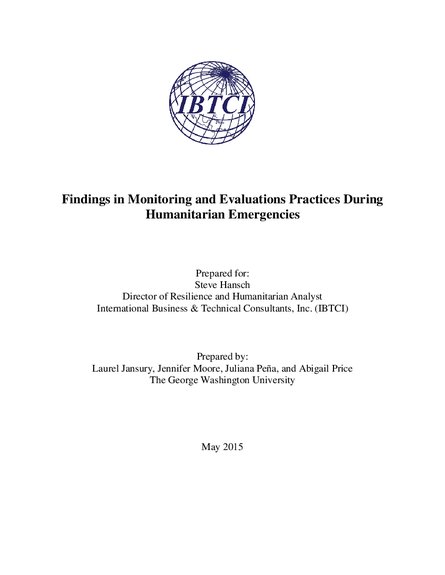
Conducting monitoring and evaluation (M&E) in complex humanitarian emergencies presents a difficult task for evaluators. This situational analysis presents M&E methodologies and tools that are currently being utilized in the field and those that are being newly introduced. Significant barriers to conducting M&E are posed by a lack of security and access as well as a lack of established M&E processes throughout programs’ life cycles. This precipitates the need for remote monitoring practices and the leveraging of local staff or partners. As the humanitarian landscape changes, traditional M&E practices have evolved, incorporating technology and introducing remote monitoring techniques.
With the renewed interest of donor organizations, such as OFDA, in conducting external M&E for their humanitarian assistance (HA) programming, organizations such as International Business & Technical Consultants, Inc. (IBTCI) can leverage emerging technologies and methodologies to position themselves as leaders in the M&E community. Through the use of utilization focused methodologies, M&E can be incorporated from the inception of HA programming and be conducted more effectively. While conducting M&E is difficult in humanitarian crises, it is not impossible and should be included in the planning and implementation phases of all HA projects.